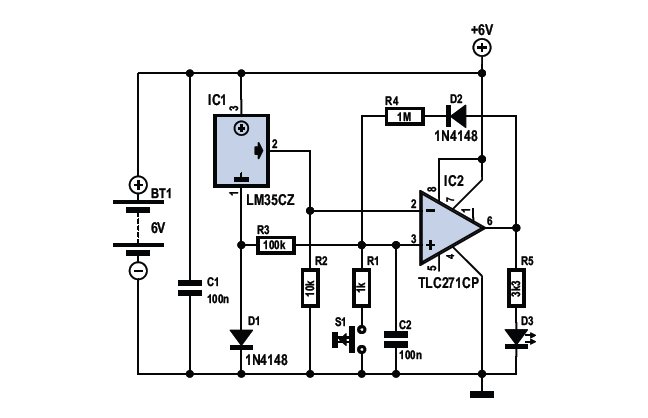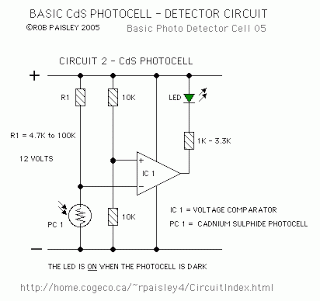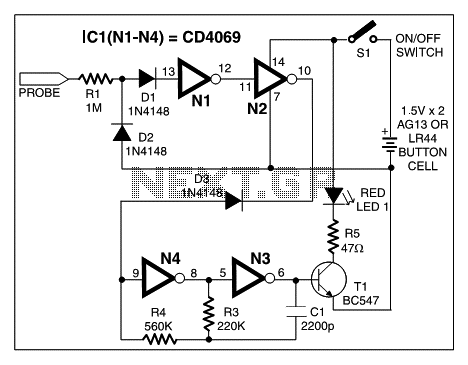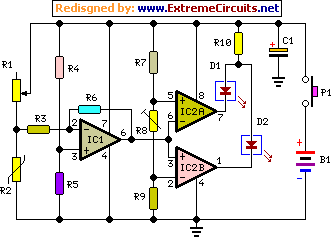
Two-Sheets Detector
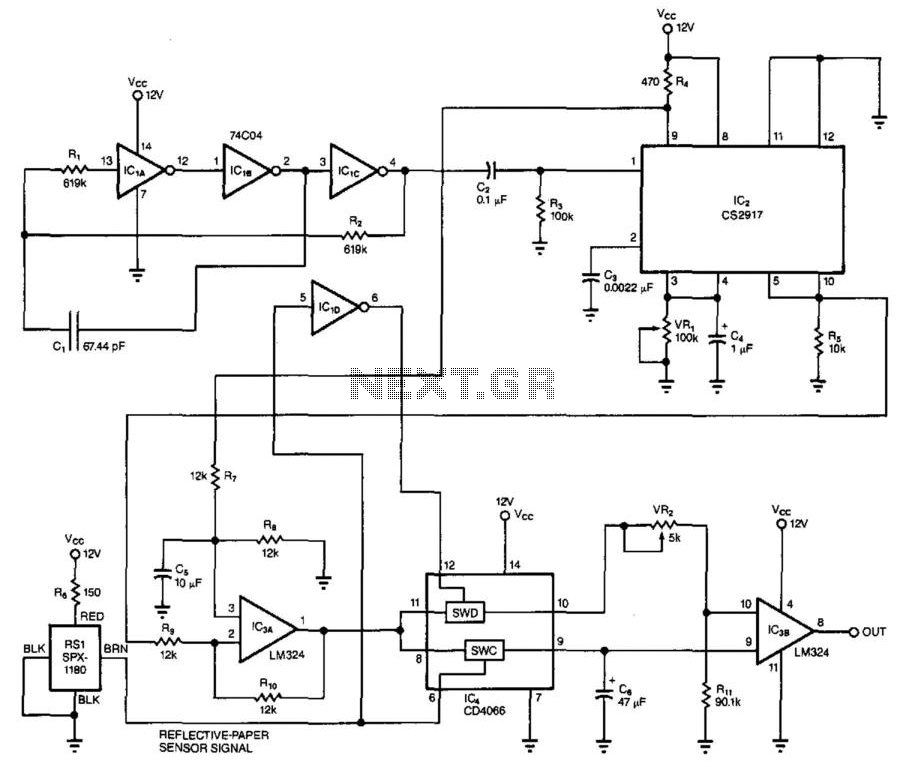
This circuit utilizes the principle of capacitance between two plates to detect when multiple sheets of paper are placed between the sensing electrodes simultaneously. CI is the sensing capacitor, composed of two plates measuring 2 inches by 15 inches with a spacing of 0.1 inches. A variation in capacitance leads to a change in the oscillator frequency of the IC1 circuit, which is then detected by IC2 and IC3.
The circuit operates based on the capacitive sensing principle, where the capacitor CI acts as a sensor that responds to changes in the dielectric material between its plates. When a single sheet of paper is introduced, the capacitance remains relatively stable. However, when multiple sheets are inserted, the effective dielectric constant between the plates increases, resulting in a measurable change in capacitance.
The configuration of CI, with its dimensions of 2 inches by 15 inches and a 0.1-inch gap, provides a substantial surface area for interaction with the paper sheets, enhancing sensitivity. The oscillator circuit, represented by IC1, is designed to generate a frequency that varies with the capacitance of CI. This frequency modulation is crucial, as it allows the detection circuitry (IC2 and IC3) to interpret changes in capacitance as variations in frequency.
IC2 and IC3 are likely configured as frequency counters or comparators that monitor the output frequency from IC1. When the capacitance changes due to the introduction of additional paper sheets, the output frequency shifts, triggering a response from IC2 and IC3. This response could be used to activate an alarm, indicate a status change, or interface with other systems.
The circuit's design can be optimized for various applications, such as paper handling systems in printers or copiers, where it is essential to detect the presence of multiple sheets to prevent jams or misfeeds. By fine-tuning the sensitivity of the capacitive sensing mechanism and the detection circuitry, the circuit can be adapted for different types of paper or varying thicknesses, ensuring reliable performance across a range of operational conditions. Using the principle of capacitance between two plates this circuit senses when more than one sheet of paper goes betwee n the sensing electrodes at a time. CI is the sensing capacitor formed of two plates. It consists of two plates 2" 15" with 0.1" spacing. A change of capacitance causes a change in oscillator frequency of the IC1 circuit, which is detected by IC2 and IC3.
The circuit operates based on the capacitive sensing principle, where the capacitor CI acts as a sensor that responds to changes in the dielectric material between its plates. When a single sheet of paper is introduced, the capacitance remains relatively stable. However, when multiple sheets are inserted, the effective dielectric constant between the plates increases, resulting in a measurable change in capacitance.
The configuration of CI, with its dimensions of 2 inches by 15 inches and a 0.1-inch gap, provides a substantial surface area for interaction with the paper sheets, enhancing sensitivity. The oscillator circuit, represented by IC1, is designed to generate a frequency that varies with the capacitance of CI. This frequency modulation is crucial, as it allows the detection circuitry (IC2 and IC3) to interpret changes in capacitance as variations in frequency.
IC2 and IC3 are likely configured as frequency counters or comparators that monitor the output frequency from IC1. When the capacitance changes due to the introduction of additional paper sheets, the output frequency shifts, triggering a response from IC2 and IC3. This response could be used to activate an alarm, indicate a status change, or interface with other systems.
The circuit's design can be optimized for various applications, such as paper handling systems in printers or copiers, where it is essential to detect the presence of multiple sheets to prevent jams or misfeeds. By fine-tuning the sensitivity of the capacitive sensing mechanism and the detection circuitry, the circuit can be adapted for different types of paper or varying thicknesses, ensuring reliable performance across a range of operational conditions. Using the principle of capacitance between two plates this circuit senses when more than one sheet of paper goes betwee n the sensing electrodes at a time. CI is the sensing capacitor formed of two plates. It consists of two plates 2" 15" with 0.1" spacing. A change of capacitance causes a change in oscillator frequency of the IC1 circuit, which is detected by IC2 and IC3.
